
IN OBSERVATIONS FROM ANOTHER DIVERSE GROUP OF ARTISTS, THOUGHTS ABOUT WAR, ARTIFICIAL INTELLIGENCE, AND THE THERAPEUTIC VALUE OF MAKING ART
Here’s a third batch of “On my mind” comments and observations from a variety of creative sources.
GEORGE WIDENER
The American artist George Widener is known for his mixed-media drawings, which are often large in size. Their compositions are based on and convey the results of complex mathematical calculations and a sense of the relationships between the different kinds of quantitative data to which they allude, such as specific dates or historical events. Partly representational and partly abstract, Widener’s unusual works recall scientific diagrams but they’re much more soulful and mysterious.

Since last year, the artist has been making frequent trips to Ukraine and neighboring countries in which certain towns and cities have served as staging areas for the delivery of humanitarian-relief supplies to Ukrainian victims of Russia’s attacks. When time has permitted, Widener has pulled out his sketchbook and made drawings of what he has witnessed in war-ravaged Ukraine. Nowadays, the war in that country is very much on his mind. Widener sent us a note that said:
“Driving down a dirt road at 80 miles per hour in Donetsk Oblast [a region in eastern Ukraine], up near the front lines… Must stay away from the sides, where there are mines. We passed an enemy corpse somewhere back [there]; they’re sometimes mined, too. In this zombie landscape, even the dead Russians are trying to kill the Ukrainians.”
“We take aid to the villagers who’ve been staying down in the bunkers, hidden away from the drones and the shelling. How do you calculate a human life? You don’t. Back in Poland, a few charcoal sketches. They’re in my head now.”
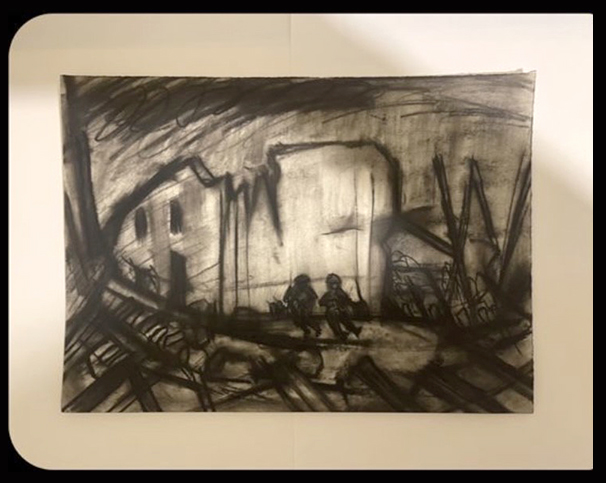

JOHN CRAWFORD
The Brooklyn-based sculptor John Crawford sometimes seems to be a member of a vanishing breed. It’s made up of artists who work big, in bronze, stone, or other built-for-eternity materials, enthusiastically exploring — and celebrating — modernism’s fascination with the expressive power of pure form. Geometry and abstraction are important items in Crawford’s tool kit. Lately, he has been working on a large-scale sculpture that is destined to be installed in a public space in a still-unannounced city in the northeastern U.S.A.
Crawford, whose work is decidedly, inescapably hands-on, has been thinking about artificial intelligence. In his “On my mind” comment, he notes:
“We will humanize A.I.”
“In New York, the exhibition 2008-2009 exhibition honoring the Metropolitan Museum of Art’s director, Philippe de Montebello, on the occasion of his retirement, in which artworks and objects were installed in the order of their acquisition during the long period f his stewardship, demonstrated that technology does not improve art. A graph of artistic high points throughout history would show spikes occurring in every culture, medium, and time period, regardless of the technology of a particular era.”

“Still-existing, human handprints in prehistoric caves contain everything we need to know.
Technology seduces us. A graph of our technological advances shows progress that moves ever upward, but eventually, each innovation becomes out of date. We’re never satisfied. Gilding just hides the lily. The technological disruption du jour always looks like the end, but we always humanize the disruption.”
“Why not now?”

RUYÒ JOURNAL
In May of this year, Sabina Khorramdel and Nazira Karimi founded Ruyò Journal, an online, artist-run publication whose mission, its website notes, is to “foster critical discourse” about Central Asian art and culture across genres and disciplines. The magazine published a printed edition in August 2023. Via e-mail, Khorramdel and Karimi explained, “Our target audience is primarily Central Asian people [who are living and working both] within and outside of Central Asia, but we publish in English, so we target the global cultural community as well.” The new publication’s editors noted that their operation is based between Dushanbe (Tajikistan’s capital and largest city) and Almaty (Kazakhstan’s largest and most ethnically and culturally diverse city).
Khorramdel and Karimi also pointed out, “We witnessed the power of language and of its impact on culture and self-perception. Contributors to Ruyò Journal engage with questions about belonging, migration, and the complex dynamics associated with home and identity.”
In a lead article in the online magazine’s inaugural issue, contributor Dilda Ramazan (Instagram: @arty.ninja) got the new publication’s thematic ball rolling with a list of characteristics that offered a sense of what it means to be a Central Asian person today. Ruyò Journal’s contribution to our “On my mind” round-up features some extracts from Ramazan’s text, including these observations:
“Being Central Asian in 2023 means carrying within oneself the cultural code and the memory of Turkestan and its diverse indigenous population of both Turkic and Persian origin.”
“Being Central Asian in 2023 means carrying within oneself the cultural code and the memory of Turkestan and its diverse indigenous population of both Turkic and Persian origin.”
“Being Central Asian in 2023 means permanently struggling with our authoritarian governments for having the bare minimum when it comes to human rights and dignity. Policing us, they never succeed at breaking our will.”
“Being Central Asian in 2023 means finding beauty and force in what was once labeled as ‘uncivilized’ and ‘uneducated.’”
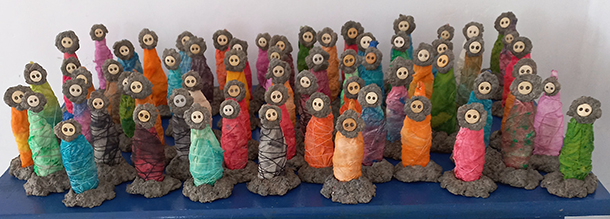
EDWARD SWIFT
Like Lon Levin, whose comment appears in part two of this month’s “On my mind” special feature, Edward Swift is an American artist who lives in San Miguel de Allende, a city in the state of Guanajuato, north of Mexico City, that boasts a large community of expatriates, including many artists. Swift moved to San Miguel, from New York, 17 years ago. He told us, “I have never made a living as an artist, although I have sold extensively over the years and have work in private collections all over the world. I always had an office job until now. I’m 80 years old and have been making art since the age of ten. I do not look upon it as a profession or a business but rather as a way of life.”
In his “On my mind” dispatch, Swift says:
“Today, like never before, we are faced with a world of uncertainty. In the blink of an eye, our world could be destroyed. So we stand facing a bleak and uncertain future. The only way I know to live in today’s world is to create images that might reflect some of the uncertainty and terror that we all feel, but to do so in a way that might bring us all into a realization that complacency is not the answer. We can still do something besides stand there and watch what appears to be the inevitable. There is little time, but there is still hope.”
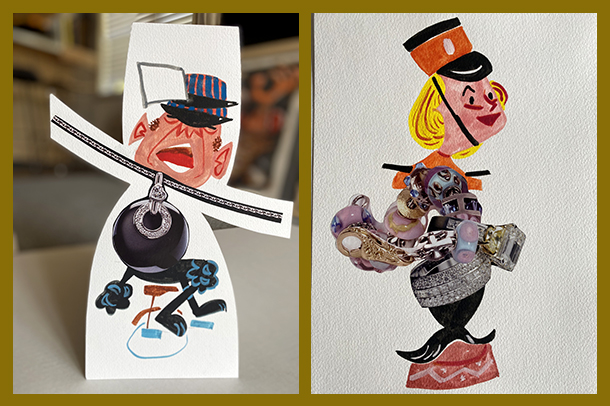
STUART SHEPHERD
The artist Stuart Shepherd, a New Zealander who lives and works in a coastal town south of Auckland, is a painter and maker of drawings and ceramics who has taught art at a local university. He has also been active as a researcher and promoter of other artists’ work in the field of outsider art in New Zealand. Shepherd’s work was recently featured in brutjournal’s September 2023 issue.
From his home and studio in New Zealand, he sent us this “On my mind” rumination:
“Lately, I’ve been noticing the people in my neighborhood as if they were characters in a play, each person with his or her own unfolding drama, and sense of fashion and identity, and struggle with money in order to achieve his or her dreams. Shakespeare is right: All the world is indeed a stage.”
“Suddenly, I’m older — I turned 69 this week. A semi-retired art teacher. I think that reaching this lofty age has given me this new-found power to reflect on those around me. I’m not as locked into in my own race to get things done and get my finances in order. I’m not rushing, so I have a new kind of distance in my connections with people, which allows me to see them and notice their various, marvelous performances.”
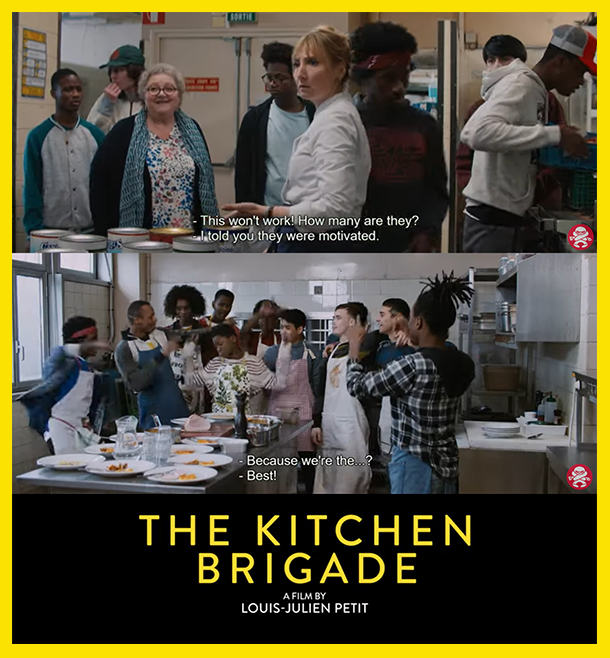
CAROLIVE
Carolive, a friend of one of the artists who is also cited in this month’s “On my mind” special section, works for a large media company in New York and recently saw the French director Louis-Julien Petit’s 2022 film The Kitchen Brigade (La Brigade). It’s a comedy-drama in which a female sous-chef leaves her job at a high-end restaurant to run a canteen in a shelter for immigrant youths, most of whom come from Africa and South Asia. There, she introduces the hierarchical, fine-restaurant brigade system, in which each worker carries out specialized tasks. The movie’s story moved her. Carolive writes:
“I recently saw The Kitchen Brigade, which surprised me with its inspiring theme. In the world today, there’s mounting despair about what we can do in the face of impending environmental disaster, mass migrations of people seeking refuge from poverty and political instability, replicating autocracies, and foreboding wars. Well, here’s the story of a prickly and difficult but feisty woman who makes a difference in her corner of the world. Yes, it’s a movie, so it can gloss over some of life’s real challenges, but in the face of despair, worry, and anxiety, this anti-heroine offers an antidote: a savvy, can-do attitude.”
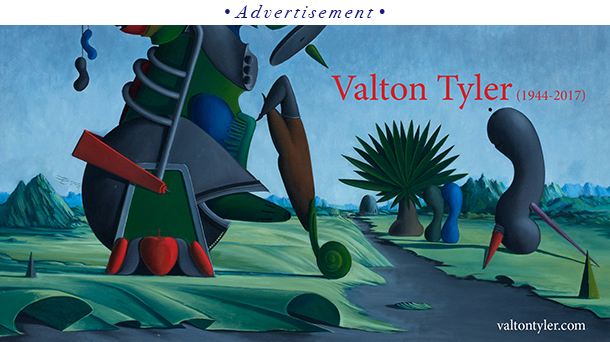

ANGELA ROGERS
Angela Rogers (Instagram: @angelajrogers) is a New York-based self-taught artist who, several years ago, following brain surgery, developed a seizure disorder, but then went on to create several tarot-card decks with all-original designs and an on-going series of sculptural creations whose main components are fabric and thread, and are made using needlework and assemblage-art construction techniques. Each one of these figurines may be seen as a kind of portrait and even as each piece seems to embody some kind of magical-spiritual energy in a talismanic way.
In August 2022 brutjournal article, Rogers, who today is associated with Fountain House Gallery in Manhattan, recalled, “I didn’t go to art school but in the late 1980s, I studied experimental theater at New York University.” Like many artists, what’s on her mind these days is the development of her own work in various forms and media. She tells us:
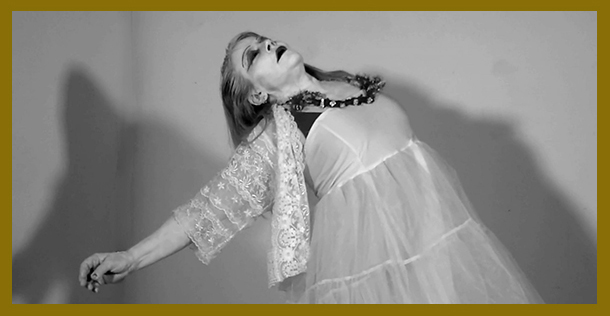
“Lately, I’ve been performing butoh, a Japanese form of experimental, modern dance that ranges from minimalist expression to the grotesque and the theatrical. This past spring, my work was included in a video installation in New York’s Herald Square in Yell, a presentation sponsored by Fountain House Gallery and curated by Karen Gormandy that promoted mental-health awareness. I also performed live on Governors Island as part of its 2023 House Fest at the beginning of September. In addition to my Poppets [large-scale, mixed-media figures], I’ve been painting a series, ‘Odd Girl Out,’ which focuses on themes of isolation and marginalization.”

CATHY WARD
Just recently, the British artist Cathy Ward (Instagram: @wardsisterward), who serves as brutjournal’s London-based correspondent, presented her newest paintings alongside the works of her friend, the Swiss artist Christine Sefolosha (Instagram: @christine_sefolosha), at Atlantis Bookshop. The store, which specializes in magic, esoterica, and the occult, is a century-old, well-known London site that holds a distinct place in British literary history and in that of old lore concerning magic and magicians.
In recent weeks, everything concerning the exhibition, Efnniht Hexibition, has been on Ward’s mind. As she noted in an article about it in brutjournal’s September 2023 issue, Ward and Sefolosha enjoyed collaborating on the production of this event, which called attention to aesthetic and spiritual affinities between their two approaches to art-making.
Ward says:
“For me, Efnniht Hexibition was a milestone. With this exhibition, I felt that I mentally transitioned through a personal crisis that had started immediately prior to the pandemic and finally concluded just before the show opened. I was able to navigate through the created chaos I had conjured up on paper to see what was before me, and this focus and automatism has helped me to ‘see’ what to do in my life.”
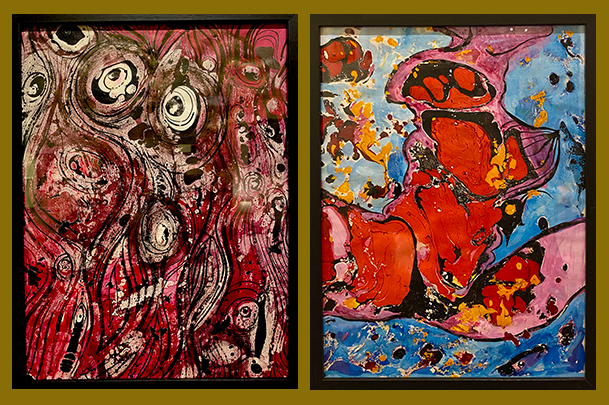
“Back in the 1970s, as a teen, I used the same method to make images, mostly about myths and fairytales. The series of works I showed in this latest exhibition embraced the Demeter-Persephone-Hades myth about lust, loss, and rediscovery and regeneration as much as it applied to my own situation. To be able to manifest this work was a great power transition. Through this art-making, I feel that my life has shifted.”

EVA PETRIC
Dividing her time between Ljubljana, the capital of Slovenia; Vienna, Austria; and New York City, Eva Petric (Instagram: @eva_petric_angel_hound) is a multimedia artist who is interested in — and has been known to examine or use as both the subjects and the raw materials of her art — scents, shadows, and human emotions. See our report about Petric’s unusual concept-driven art in brutjournal’s August 2023 issue.
Petric waxed philosophical and hopeful in her message to this month’s “On my mind” survey, writing:
“What’s on my mind? ‘Imagine all the people living life in peace. Imagine all the people sharing all the world. Imagine.’ So sings John Lennon.”
“Today, what is a matter of imagination, and what is a matter of fact? The fact is that artificial intelligence has become a part of our lives. Will AI enable us to realize what John Lennon imagined? Will it enable us to not repeat our mistakes of today and from the past? Will it help free us from greed and irrationality?”
“The fact is that the human heart can live in a container of oxygen and with AI replacing emotions. But is such a heart still a human heart? Imagine…”


